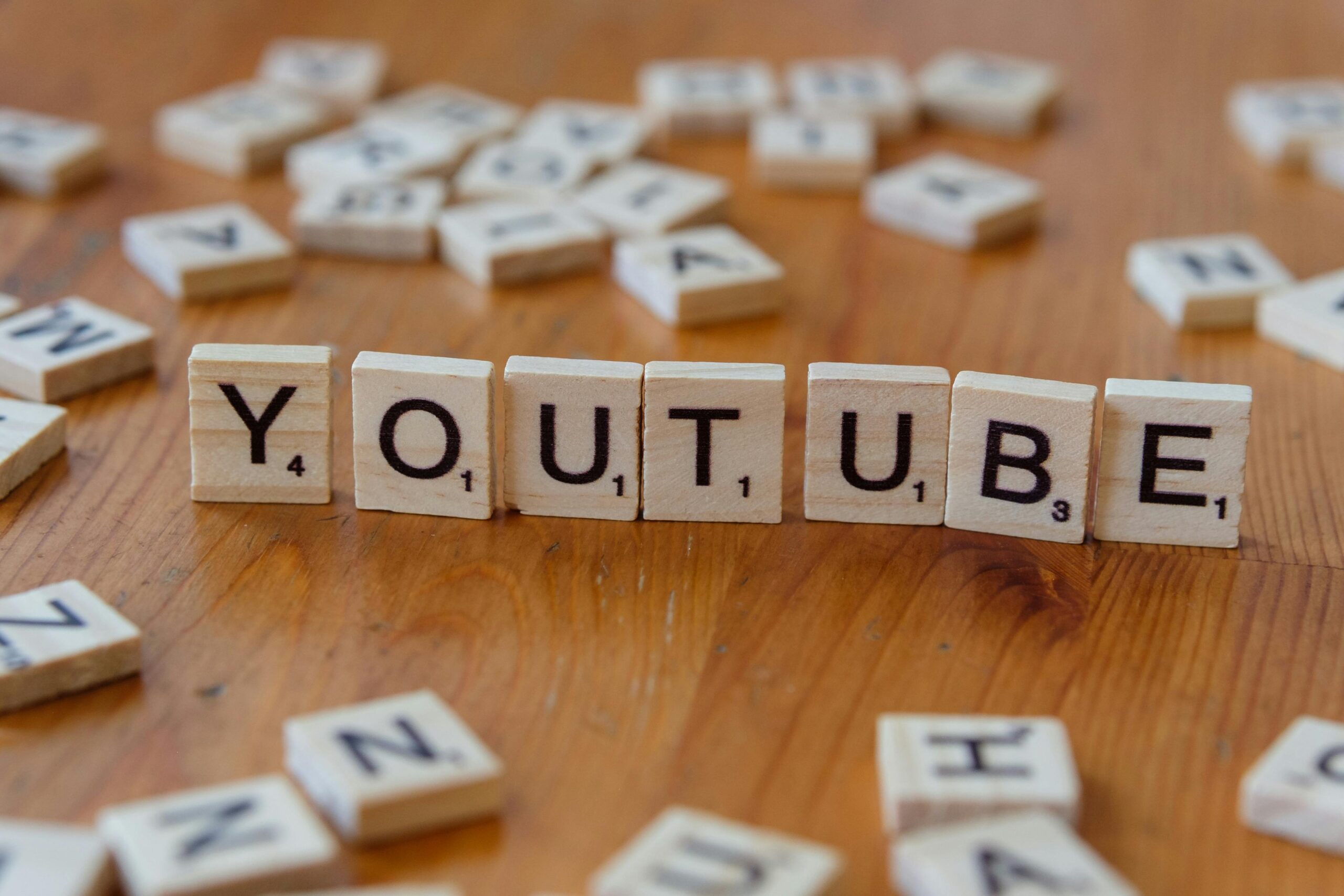So, you’ve probably stumbled across youtube to text convert tools and wondered, “Is this for real? Can I actually just turn videos into text without losing my mind?” Well, you’re not alone. The whole idea of effortlessly transforming hours of video content into neat, readable text sounds like one of those too-good-to-be-true things, right? But here’s the kicker — it’s actually happening, and it’s changing how we consume and repurpose content. Youtube to text convert isn’t just a fancy phrase anymore; it’s becoming a must-know hack for students, marketers, and anyone drowning in video info.
Now, why is no one talking about how insanely useful this is? Maybe it’s just me, but I find it baffling that we’re still manually transcribing videos, when with a few clicks you can have your entire lecture, interview, or that random cat video turned into text. Not gonna lie, this surprised me too. What if we’ve been wrong all along, thinking video content was only for watching, when really, it’s begging to be read, searched, and quoted? If you’re scratching your head wondering how to make this magic happen, you’re in the right place. This guide dives into the best ways to youtube to text convert without breaking a sweat – because who’s got time for complicated software or endless typing?
You’d think this would be obvious, right? Yet, many still miss out on the power of converting videos into text for SEO, content creation, or just plain old convenience. Whether you’re a content creator looking to boost your blog, or just someone wanting to save time, learning how to youtube to text convert is a game-changer. Stick around, because we’re about to unpack everything you need to know to transform videos into text – effortlessly, reliably, and maybe even a little bit fun.
What Is YouTube to Text Conversion and Why Is It Essential in 2024?
What Is YouTube to Text Conversion and Why Is It Essential in 2024?
Alright, so here we are in 2024, and apparently, turning YouTube videos into text is a thing now. I mean, who even thought we’d be fussing over this? But, guess what, it’s actually kinda important, whether you like it or not. So, what is this “YouTube to text conversion” malarkey? Basically, it’s the process of converting the spoken content in YouTube videos into readable text. Yeah, sounds simple, but it’s way more useful than you’d expect.
Why Bother Converting YouTube Videos to Text Anyway?
Honestly, at first I thought, “Why not just watch the video?” But then, if you’ve ever tried finding a particular bit in a 20-minute rant or tutorial, you’d know it’s a nightmare. Plus, sometimes you’re in a noisy café or your boss is breathing down your neck, so subtitles or transcripts become lifesavers.
Here’s a quick rundown of why YouTube to text convert is kinda essential now:
- Accessibility: Helps people who are deaf or hard of hearing understand video content.
- SEO Boost: Text content gets indexed by search engines, which means better visibility. (Yeah, Google loves text.)
- Quick Reference: Easier to skim through text than re-watch a whole video.
- Content Repurposing: Bloggers, marketers, and creators can reuse text for articles, captions, or scripts.
- Language Learning: Reading along can improve comprehension and vocabulary.
Honestly, I never realised how many reasons there are until I started digging. Maybe it’s just me, but it’s surprising that people still sleep on this.
How Does YouTube to Text Conversion Even Work?
Okay, so this isn’t rocket science, but it’s not exactly straightforward either. There are a few ways to do it:
- Manual Transcription: You listen and type it out yourself. Tedious and soul-crushing.
- YouTube’s Auto-Generated Captions: YouTube automatically creates subtitles, but they’re often wrong or hilarious (like “I’m going to the store” turning into “I’m going to the door”).
- Third-Party Software or Services: These use AI to convert speech to text, and some are surprisingly accurate.
Here’s a quick table to compare:
| Method | Pros | Cons |
|---|---|---|
| Manual Transcription | Most accurate | Time-consuming, boring |
| YouTube Auto Captions | Free and instant | Often inaccurate, poor punctuation |
| Third-Party AI Converters | Fast and improving accuracy | May cost money, errors still happen |
Youtube To Text Convert: How To Effortlessly Transform Videos Into Text
Alright, now the juicy bit. How do you actually do this without pulling your hair out?
Step-by-step (because who doesn’t love a list?):
- Pick your video: Make sure it’s public or you have access.
- Use YouTube’s built-in captions: Sometimes, you can just click the “CC” button and then copy the transcript. It’s under the three-dot menu near the description.
- Try online converters: Websites like Otter.ai, Rev.com, or Temi offer decent transcription tools. Some are free up to a point, others charge.
- Proofread: No matter what, you gotta check errors. Trust me, the AI messes up slang, accents, and technical terms.
- Format the text: Break it down into paragraphs, add timestamps if needed, and ready to go!
Honestly, it’s not rocket science but still requires patience. Sorry, had to grab a coffee — anyway, where was I? Oh yeah, you can also use software like Descript, which lets you edit video by editing the text transcript — kinda clever, right?
Why Is This a Big Deal in 2024?
Maybe it’s just me, but it feels like video content is exploding everywhere — TikTok, YouTube, Instagram reels — and people just don’t have time to watch every single clip. Having text versions means you can digest info faster or search for keywords without scrubbing through a video.
Plus, with remote work and online learning becoming the norm, transcripts make content more inclusive. There’s also the whole GDPR and accessibility laws angle — businesses might get fined if their videos aren’t accessible to everyone. So, yeah, it’s not just a fad.
A Quick Look at the History (Because Why Not?)
Did you know that captioning videos started way back in the 1970s for television? It was mainly for the deaf community, but now it’s everywhere thanks to tech advances. YouTube launched automatic captions in 200
Top 7 Best Tools for YouTube to Text Convert in British English
Alright, so you’re here because you’ve got a bunch of YouTube videos and you’re thinking, “How the heck do I turn all this babble into text without losing my mind?” Yeah, I get it — sometimes you just want the gist, the transcript, the juicy bits in plain ol’ text form without replaying the same video 800 times. So, welcome to the chaotic world of YouTube to text convert tools. Not really sure why this matters that much, but apparently, it does. Maybe it’s just me, but sometimes I wonder if Google itself wishes it had a button that just spat out text from videos instantly. Anyway, what was I saying again? Oh right, here’s a rundown of the top 7 best tools for YouTube to text convert, British English style (because, you know, we like to keep it posh).
Why Converting YouTube Videos to Text is Still a Thing
Before diving into the madness, let’s be real for a second. You’d think with all the tech we have now, videos themselves would be enough, right? Nope. Some folks prefer reading, others want to quote, and some just don’t have the time or energy to watch a 20-minute rant about conspiracy theories or cat grooming. Plus, transcripts help with SEO, accessibility, and basically making content more discoverable. Honestly, if you’re a content creator or marketer, ignoring text transcripts is like throwing your content into the void.
Top 7 Best Tools for YouTube to Text Convert in British English
Okay, buckle up. This is not a perfect list — I haven’t tested every tool for hours (who has time?) but these are the ones that keep popping up and seem to do the job without making you want to pull your hair out.
Otter.ai
- Pros: Pretty accurate transcription, supports multiple speakers, easy to use.
- Cons: Free version is limited; you might need to pay for longer videos.
- Notes: It’s more American English by default but you can tweak settings for British accents sometimes.
Sonix
- Pros: Fast, good for bulk uploads, supports British English accents.
- Cons: Pricing can be steep for casual users.
- Random thought: Seriously, who even came up with the name “Sonix”? Sounds like a robot DJ.
Happy Scribe
- Pros: Specifically great for British English, decent accuracy, subtitle generation.
- Cons: Occasional hiccups with slang or heavy accents.
- Worth noting: It offers both automatic and human-made transcriptions (for when you want perfection).
Temi
- Pros: Super affordable, quick turnaround.
- Cons: Less accurate with noisy backgrounds or fast talkers.
- Side note: I tried it once and it spelled “blimey” as “blime” — close enough?
Trint
- Pros: Good editing interface, supports team collaboration.
- Cons: Learning curve can be a bit steep if you’re not tech-savvy.
- Fun fact: It’s often used by journalists, so it’s pretty trusted in the biz.
Descript
- Pros: All-in-one audio/video editor with transcription, cool interface.
- Cons: Might be overkill if you just want simple text.
- Personal gripe: It auto-corrects words sometimes and you end up with weird sentences. Like, “I love chips” becomes “I love ships.” No thanks.
YouTube’s Automatic Captions
- Pros: Free, built-in, easy access.
- Cons: Accuracy depends on video quality and speaker clarity; British accents sometimes get mangled.
- Also: You can download captions as text, which is handy but you gotta clean them up.
Quick Comparison Table (Because Who Doesn’t Love Tables?)
| Tool | Accuracy (British English) | Price | Best For | Odd Quirk |
|---|---|---|---|---|
| Otter.ai | Medium-High | Free & Paid Plans | Meetings, interviews | Struggles with slang |
| Sonix | High | Pay-as-you-go | Bulk transcription | Weird name, lol |
| Happy Scribe | High | Pay-as-you-go | Subtitles, podcasts | Sometimes misses slang |
| Temi | Medium | Very affordable | Quick, casual use | Misspells some words |
| Trint | High | Subscription | Journalists, collaboration | Steep learning curve |
| Descript | Medium-High |
How to Effortlessly Transform YouTube Videos Into Text Step-by-Step
You ever just sit there watching a YouTube video and think, “Man, I really wish I could just have this as text instead of listening to some bloke rambling for 20 minutes”? Yeah, me too. Especially when you’re on a deadline or just want to skim through the key points without losing your mind. So, how do you actually go about turning those YouTube videos into text without pulling your hair out or, worse, typing it all out yourself? Buckle up, because I’m about to ramble through “How to Effortlessly Transform YouTube Videos Into Text Step-by-Step.” Or at least, I’ll try.
Why Bother Converting YouTube Videos to Text Anyway?
Not really sure why this matters, but apparently a lot of people want transcripts for videos. Maybe it’s accessibility? Or, you know, for creating blog posts, study notes, or just stalking your favourite YouTubers’ exact words. Whatever it is, converting video content to text ain’t just some fancy tech trick. It’s actually pretty useful.
Historically, transcription was this nightmare of listening, pausing, typing, rewind, repeat — like a torture device invented by some medieval scribe with a grudge. Now, with AI and software, it’s supposed to be easier. But “easier” can mean different things depending on your patience level.
Youtube To Text Convert: The Basics You Need to Know
So, if you want to do this without losing your sanity, here’s what you gotta keep in mind:
- Accuracy varies wildly. AI transcription is good, but it’s not perfect. Accents, background noise, mumbling — all mess things up.
- YouTube captions are a mixed bag. Some creators add subtitles, some auto-generate them (which can be hilarious or gibberish).
- Tools come and go. Some free, some paid, and some just plain dodgy.
Anyway, here’s a quick plain-text table for you, because who doesn’t love them?
| Method | Pros | Cons |
|---|---|---|
| Manual Transcription | Most accurate | Takes forever, soul-draining |
| YouTube Auto-Captions | Free, immediate | Often inaccurate, needs editing |
| Third-Party Transcription Tools | Fast, some are cheap/free | Quality varies, privacy concerns |
| AI-Powered Services (e.g. Otter.ai, Temi) | Fast, reasonably accurate | Subscription cost, needs proofreading |
Step-by-Step: How To Effortlessly Transform Videos Into Text
Okay, let’s get down to brass tacks. Here’s a step-by-step that hopefully won’t make you want to throw your laptop out the window:
- Pick your video — obviously, start with the YouTube video you wanna convert.
- Check if captions exist — click the CC button on the video. If captions show up, you’re halfway there. Sometimes you can even download these directly using online tools.
- Use YouTube’s transcript feature — click the three dots under the video, select “Open transcript.” It’ll show time-stamped text you can copy. Annoyingly, sometimes it’s hidden or not available.
- Copy and paste the transcript — into a text editor or Word doc.
- Clean it up — because auto-generated captions are like that friend who’s always slightly off. Fix grammar, remove ums and ahs, and add punctuation.
- If no captions or you want better accuracy, use a transcription service — upload the video or audio and let the AI do its thing. Expect to pay for the best ones.
- Proofread, proofread, proofread. Seriously, don’t skip this. AI is clever but not psychic.
Wait, Hold Up — Coffee Break Time
Sorry, had to grab a coffee — anyway… where was I? Oh yeah, transcription services. These days, you got loads of them. Some popular ones:
- Otter.ai — great for meetings, decent for YouTube videos, and has a free tier.
- Temi — cheaper, faster, but less accurate sometimes.
- Rev.com — human-powered transcription, so it’s pricier but more reliable.
- Happy Scribe — supports multiple languages, handy if you’re into foreign vids.
Honestly, if you’re just doing this occasionally, maybe stick to free tools or YouTube’s own captions. If you’re a content creator or a journalist, investing in a paid service is probably worth it. Just don’t expect miracles — even the best tech gets confused, like when someone says “their” instead of “there,” or mumbles “um” for a bit too long.
Some Quick Tips For
The Ultimate Guide to Accurate YouTube Transcriptions for British English Speakers
Alright, so here we are, diving into the murky waters of YouTube transcriptions for British English speakers. Honestly, I never thought I’d be this invested in converting YouTube vids into text, but apparently, it’s a thing? Like, “Youtube To Text Convert: How To Effortlessly Transform Videos Into Text” sounds simple enough, but oh boy, it’s a bit more complicated than just hitting a button and boom, done. Anyway, if you’re like me—someone who’d rather skim a text than listen to a five-minute ramble—this “Ultimate Guide to Accurate YouTube Transcriptions for British English Speakers” might be your cup of tea. Or not. Who knows.
Why This Still Matters (Even If You’re Not A Nerd Like Me)
You might be asking, “Seriously, why bother with transcriptions? Just watch the video, duh!” But hold on. Imagine you’re in the tube, or maybe you’ve got flaky Wi-Fi (which is basically every Londoner’s eternal struggle), and streaming video is a nightmare. Or you’re deaf or hard of hearing—then captions and accurate transcriptions aren’t just nice, they’re essential. Plus, for content creators, having a neat, searchable text version of your videos boosts SEO like nothing else. Google loves text, not so much the video blobs.
Also, here’s a wild fact: YouTube’s automatic captions often sound like a drunk Shakespeare trying to recite Hamlet. Maybe it’s just me, but the British accent seems to throw off the AI big time. It’s like it’s trying to understand someone ordering a Full English breakfast after three pints. So, yeah, accuracy matters if you want something that actually makes sense.
The History Of YouTube Transcriptions (Because Why Not?)
Just for kicks, let’s take a quick stroll down memory lane. YouTube started adding automatic captions around 2009, which was pretty revolutionary at the time. Before that, if you wanted subtitles or transcriptions, you had to do it all manually or pay some service. Now, it’s mostly free, but with a catch: the AI transcription quality depends heavily on the accent, audio quality, background noise, and whether the speaker sounds like a robot or a human. Spoiler alert: British English, with all its lovely slang, posh tones, and mumbling, tends to confuse the heck out of these systems.
Youtube To Text Convert: How To Effortlessly Transform Videos Into Text (Or At Least Try)
Okay, here’s where the rubber meets the road. If you want to convert YouTube videos to text, you’ve got options. Some work better than others, some are free, some cost a fortune, and some… well, let’s just say you get what you pay for.
Here’s a handy list of popular methods:
YouTube’s Auto-Captions
Pros: Free, quick, integrated.
Cons: Often inaccurate, especially with British accents and slang.Manual Transcription Tools (like oTranscribe or Express Scribe)
Pros: Super accurate if you do it yourself.
Cons: Takes ages, and who has the patience?Third-Party AI Transcription Services (like Otter.ai, Temi, or Rev)
Pros: Better accuracy, some have British English options.
Cons: Can be pricey, sometimes require editing after.DIY with Speech-to-Text Software (Google Docs voice typing, Dragon NaturallySpeaking)
Pros: Free or one-time purchase, can be customised.
Cons: Needs clear audio, and you probably have to speak aloud, which is awkward.
Here’s a quick table to sum it up, because why not:
| Method | Cost | Accuracy for British English | Time Required | Notes |
|---|---|---|---|---|
| YouTube Auto-Captions | Free | Low | Instant | Good for rough ideas only |
| Manual Transcription | Free | Very High | Hours (per vid) | For perfectionists only |
| AI Transcription Services | £10-£30/hr | Medium to High | Minutes to hours | Best balance of speed/accuracy |
| Speech-to-Text Software | Free-£150 | Medium | Variable | Needs quiet environment |
Little Tips For British English Speakers Trying To Get It Right
Not really sure why this matters, but if you’re dealing with British accents, slang, or regional dialects, here’s what I found helps:
- Choose services that explicitly mention British English support. Some AI tools only do “English” and mostly mean American English.
- Clean audio is king. Background noise, mumbling, or music
Can YouTube to Text Convert Improve Your SEO? Here’s How!
Can YouTube to Text Convert Improve Your SEO? Here’s How!
Alright, so you’ve probably stumbled across this whole “YouTube to text convert” thing and wondered, can it actually do anything for your SEO? Like, seriously, is it just another fancy buzzword or is there some real magic behind turning videos into text? Well, buckle up, because this might get a bit messy — but hopefully, you’ll come out knowing whether it’s worth your time or just another rabbit hole.
Why Bother With YouTube to Text Convert Anyway?
Before I dive into the nitty-gritty, let’s just agree that video content is everywhere these days. I mean, YouTube’s basically the second biggest search engine after Google, right? But here’s the catch: search engines can’t exactly watch your videos. They rely on text. Title, description, captions, tags — all that jazz. So, when you convert your YouTube videos to text, you’re basically giving Google and pals something to chew on.
Not really sure why this matters, but apparently, websites with transcriptions or text versions of videos get better SEO juice. Makes sense, because more text = more keywords = better ranking? Maybe. Or maybe it’s just me overthinking this at 2am.
What Does YouTube to Text Convert Actually Mean?
In case you’re wondering, “YouTube to text convert” is just a fancy way of saying you’re turning the spoken words in a video into written text. Could be done manually (nightmare), or with some nifty transcription software (hallelujah).
Some ways you can get your vids into text:
- Auto-generated captions from YouTube (not always perfect, but free)
- Third-party transcription tools (Rev, Otter.ai, and others)
- Manual transcription (painstaking and slow, but accurate)
The whole idea is to create a text version of your video content that you can slap onto your blog posts, website pages, or even social media captions.
But Does It Actually Help Your SEO?
Here’s the million-dollar question. Will converting YouTube videos to text actually boost your SEO rankings? Spoiler: It probably can, but don’t expect miracles.
Search engines love content, plain and simple. When you have a video with no text, Google’s a bit clueless about what’s inside. But slap a transcription under it, and bam — you’ve got a treasure trove of keywords, phrases, and context that Google can index. Plus, accessibility improves (hello, visually impaired users), which is a ranking factor these days.
Also, people who prefer reading or scanning tend to stick around longer if there’s text, which may reduce bounce rates — another SEO metric.
Quick Table: Pros and Cons of YouTube to Text Convert for SEO
| Pros | Cons |
|---|---|
| More keywords for search engines | Transcriptions can be time-consuming |
| Improved accessibility and UX | Auto-captions often have errors |
| Longer user engagement on page | Might clutter your page if not done well |
| Content repurposing possibilities | Requires some editing/clean-up |
How To Effortlessly Transform Videos Into Text
Alright, this is where I get a bit impatient because there’s actually a bunch of ways to do this. If you’re anything like me, you want it done fast, without breaking the bank, and without sounding like a robot.
Step-by-step, roughly:
- Upload your video to YouTube and enable captions (auto-generated ones).
- Download the captions (there are websites and tools for this, just Google “download YouTube captions”).
- Use a text editor to clean up those captions because they’re usually full of mistakes, weird timing codes, and sometimes odd words (like “read the manual” turning into “red the manual”, seriously).
- Alternatively, upload your video to transcription services like Otter.ai, Temi, or Rev — which will give you a much cleaner transcript but at a cost.
- Paste the cleaned-up text into your blog, website, or wherever you want the SEO boost.
- Add some natural flow and maybe sprinkle in keywords (not too much, don’t be that person).
There, easy peasy, right? Well, kind of. Honestly, sometimes it feels easier to just write a blog post from scratch, but for those who hate writing, this is a decent shortcut.
Sorry, had to grab a coffee — anyway…
One thing that always trips me up is the quality vs quantity debate. Like, yeah, having text from videos is good, but if your transcription reads like a robot or has loads of mistakes, does it really help? I guess Google’s smart enough to filter out nonsense, but your readers might bail.
Also, people sometimes forget that SEO isn’t just about keywords — it’s
5 Proven Methods to Convert YouTube Videos to Editable Text Fast
Alright, so you’re staring at a YouTube video thinking, “How the hell do I turn this into editable text without losing my mind?” Same. Seriously, who even came up with this obsession to convert YouTube vids to text? Maybe it’s just me, but sometimes I just want to skim through the transcript instead of watching some twenty-minute rant about… I dunno, the best way to fold a fitted sheet or whatever. Anyway, here’s the lowdown — 5 proven methods to convert YouTube videos to editable text fast, because life’s too short to type everything out by hand.
Why You Even Need to Convert YouTube Videos to Text?
Before diving in, let’s be real for a sec: why bother? Well, transcripts are great for accessibility, SEO, note-taking, or just finding that one quote you vaguely remember someone saying at 12:37. Also, some of us have the attention span of a goldfish and reading is just… easier. Plus, if you’re a content creator or marketer, having text versions of your videos boosts your Google ranking. Not really sure why this matters, but apparently Google loves text more than videos. Weird flex, but okay.
Historically, transcription was a massive pain (hello, human transcribers charging by the minute). Then came AI and software tools, which made it a bit less soul-crushing. Nowadays, you’ve got options, some free, some paid, some that pretend to be easy but actually aren’t.
5 Proven Methods to Convert YouTube Videos to Editable Text Fast
Right, enough rambling. Let’s get to the meat of it. Here’s a rundown of the best ways to do the ol’ youtube to text convert thingy:
Use YouTube’s Built-In Auto-Generated Captions
- Pros: Free, quick, no extra software needed.
- Cons: Accuracy can be rubbish, especially with accents or mumblers.
Most people overlook this, but YouTube automatically creates subtitles for most videos these days. You can access them by clicking the three dots under the video, then “Open transcript.” From there, just copy-paste into your text editor. It’s not perfect, but hey, it’s free and fast. Just don’t expect Shakespeare-level grammar.
Online Transcription Services
Websites like Rev.com, Otter.ai, or Temi offer quick transcription with decent accuracy — some even have free tiers. Usually, you upload the video link or the file, and they spit out text.
- Quick tip: Otter.ai is surprisingly good for the price (or free tier). Also, it can sync with your Zoom calls, but that’s a rabbit hole for another day.
Downsides? You might have to pay for the good stuff, and sometimes the formatting looks like a dog’s breakfast.
Speech-to-Text Software
If you’re the DIY type and don’t trust online services, you can use software like Dragon NaturallySpeaking or even Google Docs Voice Typing. The trick? Play the YouTube video out loud and let the software ‘listen’ and transcribe live.
- This method is kinda hit-or-miss, because background noise or poor audio quality throws it off.
- Also, you gotta stay put and babysit it — not exactly a time saver if you ask me.
Browser Extensions
Some extensions claim to convert YouTube videos to text right in your browser. Examples include “Transcribe” or “Video to Text” tools. Just install, open your video, and let the magic happen.
- Pros: Convenient, no uploading files.
- Cons: Privacy concerns, sometimes limited to short videos, or wonky output.
Manual Transcription with Text Expanders
Okay, this one’s for the brave souls who don’t trust tech — or videos with super poor audio where software fails. Using text expanders like PhraseExpress or a simple word processor with shortcut keys can speed up manual typing.
- Basically, you pause, type, rewind, repeat.
- Tedious? Yes. Reliable? Absolutely.
Quick Comparison Table
| Method | Speed | Accuracy | Cost | Ease of Use |
|---|---|---|---|---|
| YouTube Auto-Captions | Fast | Low to Medium | Free | Easy |
| Online Transcription Services | Medium | Medium to High | Free/Paid | Easy |
| Speech-to-Text Software | Medium | Medium | Paid/Free | Moderate |
| Browser Extensions | Fast | Low to Medium | Free/Paid | Easy |
| Manual Transcription | Slow | High | Free | Hard |
But Wait, What About Accuracy?
YouTube to Text Convert: How AI Is Revolutionising Video Transcription
YouTube to Text Convert: How AI Is Revolutionising Video Transcription
Alright, so let me just say this upfront: the whole idea of turning YouTube videos into text sounds like one of those tech things that’s supposed to make your life easier but often just ends up confusing you even more. Like, seriously, why do I need a transcript of that cat video? But, hey, apparently there’s a method to the madness — and it involves AI, which is apparently the magic pixie dust of our time. So yeah, YouTube to text convert is a thing now, and it’s kinda revolutionising how we deal with video content. Not really sure why this matters, but here we go anyway.
Why YouTube to Text Conversion Even Matters
Okay, so first off, why bother converting YouTube videos into text? I mean, isn’t watching the video the point? Well, turns out, nope. Here’s the deal:
- Accessibility: For folks who are deaf or hard of hearing, transcripts are a lifeline. Makes the internet a bit more inclusive, so thumbs up for that.
- SEO Boost: Believe it or not, Google can’t really “watch” videos (yet), so having text helps with search rankings. Something about keywords and crawling bots or whatever.
- Content Repurposing: Bloggers, marketers, and lazy people (guilty) can reuse the video content as blogs, articles, social media posts — you name it.
- Easy Reference: Sometimes you just want the gist without watching the whole thing. Who has time for a 20-minute rant, right?
Honestly, I could go on, but you get the drift. YouTube to text conversion isn’t just geeky tech stuff; it’s practical (well, most of the time).
The AI Factor: Why It’s Not Just Fancy Magic
Now, before you roll your eyes and say “here we go with the AI hype,” let me explain. AI transcription isn’t just some robot guessing what’s being said (although sometimes it feels like it). It’s actually pretty clever. The way it works involves deep learning models trained on zillions of hours of spoken language. So the AI learns accents, slang, dialects, and even mumbling (sort of).
Here’s a rough breakdown of what’s going on behind the scenes:
- Audio Processing: The AI splits the audio track from the video and analyses it.
- Speech Recognition: Converts the spoken words into raw text using speech-to-text models.
- Punctuation & Formatting: Adds commas, full stops, and capital letters (or tries to, anyway).
- Contextual Understanding: Some advanced systems try to figure out context to improve accuracy (like distinguishing “their” from “there”).
- Export Options: Saves the transcript in various formats — plain text, subtitles, or even PDFs.
Honestly, the progress is wild. A decade ago, this would have been a right pain in the neck, but today, you can get near-instant transcripts. Though don’t get me started on how often it butchered my name in tests… 🙄
How to Effortlessly Transform Videos Into Text (Yeah, Right…)
So you’re probably wondering, “Okay, but how do I actually do this without losing my mind?” Good question, mate. Here’s a quick nudge in the right direction:
- Use YouTube’s Auto-Captions: Yeah, YouTube has built-in auto captions. Not perfect, but free. Just click the little CC button or check the video’s transcript section. Pro tip: It’s usually hilarious to see what mistakes it makes.
- Try Dedicated AI Tools: There are loads out there — Otter.ai, Rev, Temi, and even Google’s own speech-to-text API if you’re feeling fancy.
- Manual Editing Still Needed: Don’t kid yourself, you’ll have to proofread. AI isn’t human (yet), and it often gets homophones or noisy backgrounds wrong.
- Use Browser Extensions: Some extensions convert videos on the fly, which is handy if you’re lazy (like me).
- Batch Process for Bulk Work: If you’re a content creator juggling tons of videos, some platforms let you upload multiple files for transcription at once.
Honestly, the whole process is pretty straightforward if you don’t mind a bit of tinkering. Although, sometimes it feels like you need a degree in computer science just to get the hang of it.
Random Side Note: Sorry, Had to Grab a Coffee — Anyway…
Back now. Right, so the other day I tried to transcribe a 10-minute YouTube tech review using AI. The AI thought “USB-C” was “You see C” — no joke. It made me laugh and want to throw my laptop out the window simultaneously. But the point is, it’s not perfect
Beginner’s Guide: How to Extract Text from YouTube Videos Without Stress
Alright, so you wanna know how to rip text outta YouTube videos without losing your mind? Well, you’re in the right place — or, at least, I hope so. I mean, seriously, why anyone thought watching hours of someone talking just to get a handful of quotes was a good idea is beyond me. But hey, here we are, and I’m gonna try and make this as painless as possible. Grab a cuppa or whatever keeps you sane, and let’s dive into this beginner’s guide: How to Extract Text from YouTube Videos Without Stress. Yeah, sounds like a mouthful but stick with me.
Why Even Bother Extracting Text from YouTube Videos?
Not really sure why this matters to some people, but turns out, getting text from videos is kinda useful. Maybe you’re a student who hates transcribing lectures (who doesn’t?), or a content creator wanting to repurpose your own video scripts, or just someone who likes having subtitles for those “what did they just say?” moments.
Here’s the quick rundown why it’s worth the hassle:
- Accessibility: Text makes videos easier to search through and more accessible to people with hearing difficulties.
- SEO Boost: Having the transcript can improve your website’s SEO if you embed the video and text together.
- Content Repurposing: Blog posts, social media snippets, newsletters — text is more versatile than video.
- Language Learning: Helps non-native speakers to catch every word, slowly and painfully.
Anyway, what was I saying again? Oh right, converting YouTube videos to text.
Youtube To Text Convert: How To Effortlessly Transform Videos Into Text
Effortlessly, yeah right. But there are some tools and tricks that make it less of a nightmare. Here’s a basic outline of how you’d go about it:
Use YouTube’s Auto-Generated Captions
YouTube does have this fancy auto-caption thing, which isn’t perfect but sometimes good enough. You can find the transcript option below the video (the “…” menu near the save button), then copy-paste it somewhere.
Problem? Auto-captions are, well, robotic and often wrong. So if you want legit clean text, you gotta put in a bit more effort.Try Dedicated Transcription Tools
Loads of apps and websites promise to turn your video into text — some free, some paid. Examples include Otter.ai, Rev.com, Temi, and Happy Scribe. They often do a way better job than YouTube’s built-in captions.
Downsides:- Some charge per minute of transcription, so your wallet might cry.
- Accuracy depends on audio quality, accents, background noise (which, honestly, is always a gamble).
Manual Transcription (If You’re Masochistic Enough)
Yeah, I don’t recommend this unless you’re a glutton for punishment. But sometimes, especially with super important stuff, you gotta do it yourself.
Pro tip: Use VLC or any media player with adjustable playback speed, slow down the video, and type as you listen. Mind-numbingly slow but effective.Browser Extensions and Online Converters
Some browser add-ons claim to extract text from YouTube videos. Be wary though — they sometimes work, sometimes don’t, and sometimes install malware. So, ya know, do at your own risk. Seriously, who even came up with this?
Quick Table: Comparing Top Youtube To Text Convert Methods
| Method | Accuracy | Cost | Speed | Ease of Use |
|---|---|---|---|---|
| YouTube Auto Captions | Low to Medium | Free | Instant | Very Easy |
| Paid Transcription Services | High | Moderate-High | Fast | Easy |
| Manual Transcription | Very High | Free | Very Slow | Hard |
| Browser Extensions | Variable | Mostly Free | Fast | Medium |
Oh, wait, gotta pause — sorry, had to grab a coffee — anyway…
I swear, the moment I start writing these guides, my brain decides it’s time to snack or stare at the ceiling. Anyway, back to the madness.
So, if you’re the kind of person who freaks out at paying for stuff, YouTube’s auto captions might seem like the saviour. But be prepared to spend ages cleaning up gibberish like “I’m going to the jello store” instead of “I’m going to the Hello Store”. Classic.
Tips To Make Youtube To Text Convert Less Painful
- Choose videos with clear audio — no one wants to decipher someone mumbling in a pub.
Top Tips for Perfecting Your YouTube to Text Convert Process in British English
Alright, so you’re here because you want to nail this whole “YouTube to text convert” thing, right? Honestly, who isn’t? I mean, turning those endless hours of videos into neat, searchable text sounds like a magic trick—but without the rabbits and top hats. Whether you’re a content creator, a student cramming for exams, or just someone who hates watching videos on mute (guilty), this process is pretty handy. But, oh boy, it’s not always as straightforward as YouTube makes it seem. So, buckle up, because here are my top tips for perfecting your YouTube to text convert process, all in proper British English — or at least, trying to be.
Why Bother with YouTube to Text Convert Anyway?
Not really sure why this matters, but apparently, loads of people prefer reading to watching videos. Maybe it’s just me, but I find skimming text way faster than sitting through a 20-minute vlog about… I dunno, cat behaviour or the latest makeup trends. Plus, text is searchable, editable, and you can quote it without awkward “um”s and “like”s. Also, for accessibility reasons, having text versions helps folks who are deaf or hard of hearing.
Here’s a quick throwback: YouTube started adding automatic captions years ago, but those were often as reliable as a dodgy umbrella in a storm. Nowadays, with AI and fancy software, converting YouTube content to text has gotten a tad easier—though not perfect, so don’t get your hopes up.
Quick Breakdown: How YouTube to Text Convert Works (Or Should)
At its core, the process involves transcription—turning spoken words into written text. Sounds simple, right? Well, not exactly. Accents, background noise, mumbling, and all those “you knows” mess it up. But here’s the gist:
- Automatic Subtitles on YouTube: YouTube tries to auto-generate captions using speech recognition tech. Sometimes brilliant, often a joke.
- Manual Transcription: Someone listens and types out the words. Super accurate but super time-consuming.
- Third-Party Tools and Software: Programs like Otter.ai, Descript, or happy Scribe that do the heavy lifting with AI, allowing edits.
- DIY Methods: Downloading the video, running it through transcription software, then proofreading.
Top Tips for Perfecting Your YouTube to Text Convert Process
Okay, now to the good stuff. Here’s what I’ve learned from way too many late-night experiments:
Choose Your Tools Wisely
Not all transcription tools are created equal. Some charge a bomb, others are free but rubbish. For British English, make sure your tool supports UK accents well. I once tried a US-centric tool, and it turned “schedule” into “skedjool” — not helpful.Clean Up the Audio First
If you can, get a cleaner audio file. Background noise is the enemy here. YouTube videos can be a mess with music, chatter, or random street noise. Some tools struggle to separate speech from noise, so if you can mute the background or boost volume, do it.Proofread Like Your Life Depends On It
Automatic transcriptions are rarely perfect—think of them like that one mate who’s always close but never spot-on. Expect weird spellings, wrong words, and random nonsense. You’ll need to comb through the text, fixing those bits. It’s tedious but necessary.Use Timestamps for Easy Navigation
If your project involves referencing, timestamps are lifesavers. Some tools add these automatically, but if not, consider adding them yourself. Nothing worse than digging through a wall of text to find a particular quote.Be Patient, Seriously
Don’t rush it. Rushing leads to errors and frustration, which nobody wants. Maybe it’s just me, but I once tried to speed through a transcription and ended up with a nonsense paragraph that looked like a toddler smashed the keyboard.
The Not-So-Fun Part: When Things Go Wrong
YouTube to text convert is not foolproof, and there’s a few common pitfalls:
Accents and Slang Confuse Machines
British English is packed with slang, regional accents, and sometimes just plain weird pronunciations. AI tools can struggle. For example, Cockney rhyming slang or Scottish burrs might get butchered.Technical Jargon Throws a Wobbly
If the video is about something niche—like cryptography or astrophysics—expect a lot of misheard words. Your “quasar” might become “quasar” or “quasar.” Err, same word, but you get the point. Proofreading is key.**
The Best Free and Paid YouTube to Text Convert Software Compared
Alright, so you wanna convert YouTube videos into text, right? Like, maybe you’re a student trying to get notes from a lecture, or a content creator wanting subtitles without the hassle, or just someone who’s too lazy to type out what that annoying vlogger said. Honestly, who even watches the videos anymore when you can just read the transcript? Kidding… kinda. But here’s the thing: finding good software to do this isn’t exactly a walk in Central Park. You get loads of options, some free, some paid, and they all claim to be the best. So, let’s try to sort through the mess and figure out what’s what with the best free and paid YouTube to text convert software compared. Yeah, I know, riveting stuff.
Youtube To Text Convert: How To Effortlessly Transform Videos Into Text
First off, the whole concept of converting YouTube videos into text isn’t exactly new. It’s basically a fancy way of saying “transcribing” — you know, turning spoken word into written words. This has been around ever since the internet decided to become more video-centric, probably sometime in the early 2000s when YouTube got popular. Back then, you’d have to do it manually (ugh, no thank you). But now, thanks to AI and machine learning, there are tools that do it for you in minutes. Some are pretty decent, some are awful, and some are just downright confusing — like, why does this one require my firstborn?
Anyway, the process usually goes something like this: you either paste the YouTube URL or upload the video file into the software, it processes the audio, and spits out text. Some also add timestamps, speaker identification, or even translations. Fancy.
Why This Still Matters
Not really sure why this matters to everyone, but here we are. Honestly, converting YouTube videos to text can be a lifesaver for accessibility — subtitles help people who are hard of hearing or non-native speakers. Plus, having text makes it easier to search through content, quote stuff, or just skim through if you’re in a hurry (which, let’s face it, is often). Also, content creators can repurpose text into blogs, social posts, or scripts, which saves a ton of time.
Okay, enough preachy stuff. Let’s get down to brass tacks and talk about some software.
The Best Free YouTube to Text Convert Software
Free options are great because, well, you’re not handing over your hard-earned dosh to some random app. But of course, free usually means limited features, ads, or some weird cap on usage. Here’s a quick rundown:
YouTube’s Own Auto-Captions
- Pros: Totally free, automatic, built-in feature
- Cons: Accuracy is meh, especially with accents or background noise, no downloadable transcript unless you do some hacky stuff
- Use if: You just want a quick and dirty transcript, nothing fancy
Google Docs Voice Typing (Yep, weird choice but hear me out)
- Pros: Free, surprisingly accurate if you play the video loud and clear near your mic
- Cons: Requires manual setup, background noise messes it up, tedious for longer videos
- Use if: You’re desperate or just love a challenge
Otter.ai (Free Plan)
- Pros: Good accuracy, speaker differentiation, export options
- Cons: Limited minutes per month (600 mins), need account sign-up
- Use if: You want decent quality without paying, but can live with limits
Happy Scribe (Free Trial)
- Pros: Supports multiple languages, decent interface
- Cons: Trial is limited, you’ll have to pay eventually
- Use if: You want to test before committing
The Paid Heavyweights (Because Nothing’s Really Free, Is It?)
If you’re serious about converting YouTube to text regularly, paid tools usually offer better accuracy, more features, and less hassle. Here’s a cheeky little comparison table for ya:
| Software | Approx Cost (USD) | Accuracy | Key Features | Best For |
|---|---|---|---|---|
| Rev.com | $1.50/min | 99%+ | Human transcription, captions, editing tools | Professionals needing top-notch quality |
| Descript | From $12/month | 95-98% | Editing audio/video, collaboration, subtitles | Podcasters, video editors |
| Sonix | From $10/hour | 90-95% | Multilingual, timestamps, integrations | Multilingual users |
| Trint |
How to Use YouTube Captions for Quick and Accurate Text Conversion
YouTube captions, right? They’re kinda like the unsung heroes of the internet. I mean, everyone’s busy watching cat videos or the latest influencer rant, but barely anyone stops to think about those little texts scrolling along the bottom of the screen. Weirdly enough, these captions can actually save you a ton of time when you wanna convert YouTube videos into text. Sounds too good to be true? Well, stick with me here.
Why YouTube Captions Are Actually A Big Deal
So, first things first, captions aren’t just for folks who are hard of hearing or those who prefer binge-watching with the sound off (guilty as charged). They’re also an easy way to get a transcript of what’s being said in a video. YouTube automatically generates captions for most videos these days using speech recognition tech. Yeah, it’s not perfect, sometimes it sounds like a robot with a hangover, but it’s surprisingly useful.
Here’s what you need to know about using captions for text conversion:
- Automatic captions: YouTube’s AI does a decent job, especially for clear English speakers.
- Manual captions: Some creators add their own subtitles, which are usually way more accurate.
- Multiple languages: You can even grab transcripts in different languages if the video has them.
Honestly, this is kinda brilliant because manually transcribing a 10-minute video is like… well, a nightmare. Especially when you’d rather be watching something less productive, like those conspiracy theory deep-dives or whatever the kids are into these days.
Youtube To Text Convert: How To Effortlessly Transform Videos Into Text
Right, here’s the bit where I try to explain how to actually do this without pulling your hair out. Because let’s be honest, the internet is full of complicated tools that promise to turn YouTube videos into text but often just make you wanna scream.
Step-by-step, it goes a bit like this:
- Find the video you wanna convert. Duh.
- Check if the video has captions. Click the “CC” button or look for “Subtitles/CC” in the video options.
- Open the transcript. On desktop, click the three dots under the video next to “Save” and select “Open transcript.” If you don’t see this, no captions are available (bummer).
- Copy the transcript. It shows the text in sync with the video, timestamped by default.
- Clean up the text. Because those timestamps are annoying, you’ll need to remove them manually or use some simple text editors that can do it for you.
Sounds easy, right? Well, it kinda is. Though, sometimes the transcript is a mess — like, random line breaks, weird punctuation, and those words that sound like they’re from another planet. #ThanksYouTube
Quick Table Comparison: Caption Types and Their Accuracy
| Caption Type | Accuracy | Best For | Downsides |
|---|---|---|---|
| Automatic Captions | 70-85% (varies) | Quick, free transcripts | Misheard words, weird phrasing |
| Manually Added | 90-99% | Professional content | Not always available |
| Community Captions | 80-90% | Crowd-sourced accuracy | Inconsistent quality |
Anyway, just so you know, none of these are perfect. Like, seriously, who even came up with this automatic caption thing? It’s impressive but also a bit of a wild card.
Practical Uses For Converting YouTube To Text
You might be wondering, okay, so I get the text, but why bother? Here’s where it gets interesting — or at least less pointless than it seems at first glance.
- Content creation: Bloggers, podcasters, and social media managers can repurpose video content into articles, quotes, or scripts.
- SEO benefits: Having text versions of your videos can improve search engine rankings (Google loves text, obviously).
- Accessibility: Making content accessible to people with hearing difficulties or those who prefer reading.
- Research: Quickly scan through interviews, talks, or tutorials without watching the entire video again.
- Language learning: Use transcripts to improve comprehension or practice pronunciation.
Okay, so maybe it’s not just me who finds this kinda handy. Also, if you work in digital marketing or whatever, this is gold because time is money, and no one’s got time to type out hours of video content manually.
Sorry, had to grab a coffee — anyway…
Things To Watch Out For When Using YouTube Captions For Text Conversion
Not everything’s rosy here. YouTube captions can be a bit of a nightmare sometimes, and you gotta keep your eyes peeled for
Why Accurate YouTube to Text Convert Is Crucial for Content Creators
You know what’s wild? How much fuss there is about turning YouTube videos into text. Like, why does it even matter so much? But if you’re a content creator—especially one of those folks juggling a million platforms—it kinda does. Accurate YouTube to text convert has become this weirdly crucial thing, and honestly, I’m still figuring out why it’s suddenly such a big deal. Maybe it’s just me, but if your video captions or transcripts are all over the shop, does it really help anyone? Spoiler: Nope.
Why Accurate YouTube to Text Convert Is Crucial for Content Creators
Right, so here’s the deal. Content creators, especially those based in the hustle-bustle of New York (or anywhere really), are constantly trying to stretch their content further than a pair of old jeans. One video can be a blog post, a podcast episode, a tweet thread, and, yes… a text transcript. This ‘YouTube to text convert’ stuff is the secret sauce for that repurposing magic.
Here’s the catch though: if your transcription is full of errors, it’s like trying to read a badly photocopied script. You lose viewers, SEO juice, and frankly, your own credibility. I mean, imagine someone trying to follow your video but the auto-generated captions say “duck” instead of “luck.” Classic, right?
Benefits of accurate YouTube to text conversion include:
- Improved accessibility for viewers with hearing impairments (because, duh, captions matter).
- Boosted SEO since Google can index the text content (not just the video).
- Easier content repurposing for blogs, newsletters, and social media posts.
- Enhanced viewer engagement because people can skim or search your content quickly.
Honestly, it’s like the unsung hero of content creation, even if it feels a bit boring to obsess over.
Youtube To Text Convert: How To Effortlessly Transform Videos Into Text
Okay, now onto the practical bit. How do you actually convert YouTube videos into text without tearing your hair out? Here’s a rough guide that I’ve cobbled together after way too many late-night Google sessions:
Use YouTube’s Auto-Captions
YouTube automatically generates subtitles for many videos. It’s not perfect—far from it—but it’s a free starting point. Just go to your video settings, enable captions, and download the transcript.
Pro tip: Always proofread because auto-captions are like that mate who means well but messes up every sentence.Try Dedicated Transcription Software
There’s loads out there—Otter.ai, Rev, Temi, and others. These tools use AI to transcribe speech but often charge a fee. They tend to be more accurate than YouTube’s auto captions, but still, a human touch is needed.
Here’s a quick table of pros and cons:Tool Accuracy Cost Ease of Use YouTube Auto Low-Medium Free Very easy Otter.ai Medium-High Free + Paid Moderate Rev High Paid only Easy Temi Medium-High Paid Easy Manual Transcription
Yeah, sounds awful, but sometimes you just gotta do it yourself. Especially if your video has a lot of jargon, accents, or background noise. I swear, nothing beats a human ear for accuracy. Plus, you get to add your own flair or fix those moments where the AI just doesn’t get it.Edit and Format
Once you have your text, don’t just dump it somewhere and call it a day. Format it properly, add paragraphs, punctuation, and maybe some emojis if you’re feeling cheeky. This makes it way easier to read and more engaging.
Why I’m Still Not Totally Sold on This Whole Thing
Alright, confession time: sometimes I wonder if all this fuss is just a bit much. Like, do people really read transcripts? Aren’t they just there because Google says so? But then again, I’ve caught myself skimming a transcript when the video’s too long or when I’m in a noisy place (like the subway). So maybe it’s just one of those behind-the-scenes things that seem boring but actually help a ton.
Sorry, had to grab a coffee — anyway…
One thing that’s kinda annoying is the inconsistency in transcription quality. You’ve got videos with crystal-clear accents and perfect audio, and then there’s that one bloke mumbling into a dodgy mic and the transcript looks like a cryptic
How to Convert YouTube Videos to Text for Research and Study Purposes
Alright, so you’ve probably found yourself neck-deep in a YouTube video—maybe one of those long-winded lectures or some random documentary that you swear you’ll reference for your essay. But here’s the kicker: you wanna turn those videos into text because, honestly, who has the time (or patience) to watch the whole thing again, right? So, yeah, today’s hot topic is all about How to Convert YouTube Videos to Text for Research and Study Purposes. Or, as the cool kids might say, “Youtube To Text Convert: How To Effortlessly Transform Videos Into Text.” Catchy, eh?
Why Bother Converting YouTube to Text Anyway?
Not really sure why this matters so much, but apparently, it does—especially if you’re a student, researcher, or just someone who likes to hoard knowledge (like me). Watching videos can be time-consuming, and sometimes, you just want the juicy bits in black and white. Plus, text is easier to highlight, quote, and reference in your work. Also, let’s be honest, some of those YouTube speakers mumble or go off on weird tangents—having a transcript means you can skim past the nonsense.
A bit of history for ya: transcription has been around forever, originally done by humans with typewriters (imagine that torture), but now, with AI and software, you can slap a video in and get a text in minutes. Magic or madness? You decide.
The Basic Ways to Convert YouTube Videos to Text
So, there’s a few ways to do this, some easier than others, but none are exactly perfect (because, seriously, when is tech perfect?):
YouTube’s Auto-Generated Captions
YouTube actually creates captions automatically for many videos. Not always the best quality—sometimes it’s like listening to a drunk parrot—but hey, it’s free and quick. You can access these captions by clicking the “CC” button or checking the transcript option below the video.
Pro tip: You can copy-paste these subtitles into a doc, but watch out for weird line breaks and errors.Manual Transcription
Yeah, welcome to the torture chamber. You play, pause, type, rewind, repeat. Great for precision but horrible for your sanity.Online Transcription Tools
There are loads of them out there—some free, some paid. Tools like Otter.ai, Sonix, or Temi claim to convert YouTube videos into text fairly accurately. You upload the video or paste the link, and voilà, text appears.
Downsides? Sometimes you gotta pay for decent accuracy, plus the odd glitch here and there. And don’t get me started on privacy concerns—uploading your stuff to random servers is a bit dodgy.Browser Extensions and Apps
Some Chrome extensions claim to extract text from YouTube videos directly. Handy, but again, quality varies wildly. Plus, your browser might feel like it’s carrying a dead weight after installing too many extensions.
A Rough “How-To” Guide for Youtube To Text Convert
Let’s say you’re ready to give this a whirl—here’s a quick and dirty step-by-step that might save you some tears:
- Find the YouTube video you wanna convert.
- Check if there’s auto-captions available (click the settings gear > subtitles/CC).
- If captions exist, open the transcript (three dots under the video > Open transcript).
- Copy and paste the transcript into your favourite text editor.
- Edit out the errors or weird timestamps (ugh).
- Alternatively, upload the video link or file to a transcription tool like Otter.ai.
- Download or copy the generated text.
- Proofread because, honestly, computers still can’t get everything right.
Pros and Cons Table: YouTube Auto-Captions vs. Transcription Tools
| Feature | YouTube Auto-Captions | Online Transcription Tools |
|---|---|---|
| Cost | Free | Usually free tier + paid options |
| Accuracy | Hit or miss, depends on audio quality | Generally better, but not perfect |
| Speed | Instant | Few minutes to process |
| Editing Required | High | Medium |
| Privacy Concerns | Low (stays on YouTube) | Medium to high (uploads to servers) |
| Ease of Use | Very easy | Easy, but sign-up may be needed |
Sorry, had to grab a coffee — anyway…
One thing that often slips my mind is the whole legal angle. Not that I’m a lawyer or anything, but ripping text off YouTube videos might be
10 Common Mistakes to Avoid When Converting YouTube Videos to Text
Alright, so you’ve got a bunch of YouTube videos and you’re thinking, “Hey, why not convert these into text?” Maybe for captions, transcripts, or just to save yourself the headache of rewatching the same clip five times. Sounds simple, yeah? You’d think so. But, oh boy, turns out there’s a minefield of mistakes that people keep making when they try to do this whole Youtube to text convert thing. Honestly, I’m not entirely sure why it’s so tricky, but here we are. So, let’s dive into the 10 common mistakes to avoid when converting YouTube videos to text — or at least try to, before I get distracted again.
Why This Still Matters (Even If You’re a Bit Over It)
Look, I get it. YouTube videos are everywhere, and sometimes you just wanna skim the content instead of watching a 20-minute ramble about… I dunno, the best way to brew a cup of tea or whatever. Converting videos to text can help with accessibility, SEO, and even content repurposing. Plus, Google loves text, so if you want your stuff found on the interwebs, you kinda need it. But here’s the kicker: doing it poorly is just gonna waste your time and make you want to throw your laptop out the window.
10 Common Mistakes to Avoid When You Convert Youtube Videos to Text
Ignoring Video Quality
If your video sounds like it was recorded in a wind tunnel or someone’s mumbling through a mouthful of biscuits, automatic transcription tools will butcher it. Seriously, don’t expect perfect text if the audio is garbage. Maybe it’s just me, but I swear some videos are recorded underwater or something.Relying Solely on Auto-Transcription
Auto tools like YouTube’s own captions or third-party apps are handy but not magical. They mishear words, mess up names, and basically turn your carefully crafted video into gibberish sometimes. Always, and I mean always, do a manual check. Or hire someone if you’re posh like that.Skipping Punctuation and Formatting
Raw transcripts look like a never-ending wall of text. Without commas, full stops, and paragraphs, it’s a nightmare to read. It’s like someone vomited words on the page. Add punctuation, break it up. Makes a huge difference.Not Considering Context or Jargon
If your video is about, say, “quantum computing” or “fish and chips” (both equally complex), transcription tools might struggle. They’ll replace technical terms with nonsense or common words. You need to correct these manually, or risk sounding like a right plonker.Overlooking Speaker Identification
If there’s more than one person talking, lumping all speech together is just confusing. You want to know who said what, especially for interviews or panel discussions. Some tools do this well, others don’t. Don’t just leave it to chance.Not Checking for Accuracy Against The Video
You know that feeling when you read a transcript and it doesn’t match what’s actually said? Yeah, that’s because people skip the verification step. Always watch and listen again while reading the text. It’s tedious but worth it.Forgetting About Background Noise and Music
Sometimes, background sounds get transcribed as words — like random “ahhs” or “ohs.” Or the tool picks up the soundtrack lyrics and adds them as dialogue. You don’t need a karaoke transcript, mate.Ignoring Legal or Copyright Stuff
Converting someone else’s YouTube video into text and then publishing it? That can be a legal minefield. Fair use, copyright laws, and all that jazz mean you might be in hot water if you’re not careful. Just saying.Not Using The Right Tools For The Job
There’s a gazillion tools out there, from free to paid. Some are better for short clips, others shine on longer videos. Picking the wrong tool is like using a butter knife to cut steel — frustrating and pointless.Failing to Optimise The Text for SEO
If you’re converting videos to text for your blog or website, just dumping the raw transcript won’t cut it. You need to tidy it up, add keywords naturally (like “youtube to text convert”), and make sure it reads well. Otherwise, Google’s gonna ignore you.
A Quick Table: Auto-Transcription Tools Pros & Cons
| Tool | Pros | Cons |
|---|---|---|
| YouTube Captions | Free, easy to use | Often inaccurate, no speaker tags |
| Otter.ai | Good accuracy, speaker ID | Limited free usage, pricey plans |
How to Automate Your YouTube to Text Convert Workflow Like a Pro
Alright, so you wanna know how to automate your YouTube to text convert workflow like a pro? Honestly, who doesn’t these days? I mean, we’re all drowning in video content and, seriously, sometimes just reading stuff sounds like a dream. Plus, there’s a weird satisfaction in seeing all those spoken words neatly typed out. Not really sure why this matters, but I guess turning videos into text is kinda the modern-day alchemy or something.
Anyway, if you’ve ever tried doing this manually, you’ll know it’s a colossal pain in the backside. Watching a 30-minute video, pausing every few seconds, then typing what they said? Nah, mate, life’s too short. So let’s dive into how to automate this whole YouTube to text convert malarkey without losing your mind or your weekend.
Why Automate YouTube to Text Convert Anyway?
First off, why bother? Well, turning YouTube videos into text is gold for a bunch of reasons:
- Accessibility: Not everyone can watch videos all the time. Some folks prefer reading, or maybe they’re deaf or hard-of-hearing.
- SEO Boost: Text content is what search engines love. Transcripts can bring your videos crawling up Google and make your content easier to find.
- Content Repurposing: Want to spin a blog post, social media snippets, or even an eBook from that video? Bam, text is your best mate.
- Note-taking: For students, professionals, or just plain curious people, having a transcript means no more frantic scribbling.
Historically, transcription was done by hand (shudder), or using clunky, expensive software. Now? Thanks to AI and cloud tech, it’s pretty straightforward. Seriously, who even came up with this? The future’s wild.
The Nuts and Bolts of Automating YouTube to Text Convert
So, here’s the thing: automating YouTube to text convert isn’t rocket science (unless you’re me and get distracted by every shiny new tool). The basic workflow looks like this:
Extract the audio from the YouTube video
You can use online tools or software to grab the audio track. Some platforms let you do this directly, but beware of dodgy sites that might try to mug you off with malware.Use Speech-to-Text (STT) software to transcribe
Upload the audio and let the magic happen. There’s a bunch of services here:- Google Cloud Speech-to-Text
- IBM Watson
- Microsoft Azure Speech
- Otter.ai
- Temi
Clean up the transcript
No tool’s perfect (yet). You’ll need to skim through, fix typos, and maybe add punctuation or paragraph breaks.Export and use your text
Put it in your blog, captions, or wherever you want.
Here’s a quick comparison table because, why not:
| Service | Accuracy | Price | Ease of Use | Extra Features |
|---|---|---|---|---|
| Google Cloud STT | High | Pay-as-you-go | Moderate (techy) | Multiple languages, timestamps |
| Otter.ai | Medium-High | Freemium | Very User-Friendly | Collaboration, real-time notes |
| Temi | Medium | $0.25/min | Super Simple | Fast turnaround, basic editing |
| IBM Watson | High | Pay-as-you-go | Moderate | Customisation options |
| Microsoft Azure STT | High | Pay-as-you-go | Moderate | Good for enterprise |
Sorry, had to grab a coffee — anyway…
Right, back. So, if you’re thinking “this all sounds a bit much”, don’t stress. There are some neat all-in-one tools that pull the whole thing together. For instance, some apps or platforms let you paste the YouTube link, and they do the extraction and transcription automatically. Magic, right? But um, heads up — sometimes the accuracy can be a bit pants, especially with accents, background noise, or fast talkers.
Pro Tips to Make Your YouTube to Text Convert Workflow Smooth AF
Maybe it’s just me, but there’s always some little hacks that make life easier:
- Use timestamps: If your transcription tool supports it, get timestamps. It makes editing and referencing way simpler.
- Batch processing: Got loads of videos? Look for tools that let you upload multiple files or links at once. Saves hours.
- Custom dictionaries: For niche terms or names, some services allow you to add custom words so the transcript isn’t full of gobbledygook
Conclusion
In conclusion, converting YouTube videos to text has become an invaluable tool for enhancing accessibility, improving content comprehension, and facilitating efficient information retrieval. Throughout this article, we explored various methods to transcribe YouTube content, from automated tools and software to manual transcription techniques, each offering unique benefits depending on the user’s needs. We also highlighted the importance of accuracy and the potential challenges, such as dealing with background noise or multiple speakers, which can affect transcription quality. Embracing these transcription solutions not only helps creators repurpose their content but also supports viewers who prefer reading or require text-based formats for better engagement. As video content continues to dominate online platforms, leveraging YouTube to text conversion tools can significantly boost your productivity and content reach. If you haven’t tried converting your favorite videos to text yet, now is the perfect time to explore these tools and unlock the full potential of your YouTube experience.






































































